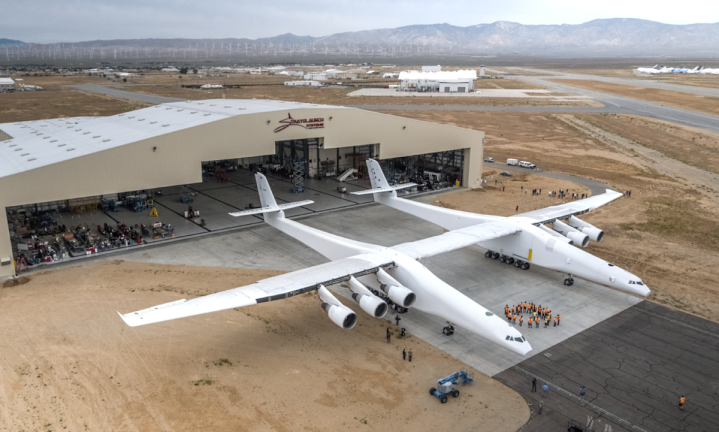We may not all be able to become astronauts, but that doesn’t mean we won’t be able to orbit Earth. Here to help bring you closer than you ever thought possible to your childhood dreams is Microsoft co-founder Paul Allen, the mastermind behind the world’s biggest airplane. The Stratolaunch weighs in at 500,000 pounds, boasts twin fuselages, and a wingspan of 385 feet. And yesterday, Allen posted footage of the monster plane in its latest test as it reached a top taxi speed of 46 miles per hour. It’s still a far cry from what it will ultimately be able to do (which hopefully, will be launching rockets into low-Earth orbit), but it’s a significant step in the right direction.
Captured new video of @Stratolaunch plane as it reached a top taxi speed of 40 knots (46 mph) with all flight surfaces in place on Sunday. The team verified control responses, building on the first taxi tests conducted in December. pic.twitter.com/OcH1ZkxZRA
— Paul Allen (@PaulGAllen) February 26, 2018
Allen’s video captures the Stratolaunch at its new top speed “with all flight surfaces in place,” the entrepreneur captioned his tweet. “The team verified control responses, building on the first taxi tests conducted in December.” And if all continues to go as planned, the plane could take its first test flight in 2019. Once that happens, it may be used to bring rockets into the stratosphere before sending them into space. This method is generally considered a more cost-effective and efficient path to low-Earth orbit, which is what most satellites require.
While there are other projects in place looking to achieve the same end goal as the Stratolaunch, none are looking to do so with quite as much flair. The Stratolaunch, after all, dwarfs just about every other plane currently in existence. Not only is its wingspan about 20 percent greater than the current record holder — the Hughes H-4 Spruce Goose — the plane also has a maximum takeoff weight that far exceeds anything else on the market. At 590 metric tons, this is nearly twice the weight of even the most capable commercial airlines. For reference, the Boeing 747 has a maximum takeoff weight of a mere 300 tons.
Ultimately, Allen’s goal with the Stratolaunch isn’t just to shatter records, but rather to “provide convenient, reliable, and routine access to low-Earth orbit.” Of course, that’s not without its challenges. Aside from the obvious engineering and technological hurdles that come with such a behemoth project, there’s also the gargantuan cost. Back in 2011 when the project was first introduced, the Stratolaunch was slated to cost $300 million. It’s unclear if this is still the case, or if the team has already blown past this original budget.
But regardless of its price tag, it’s certainly a treat to see a machine of this size take to the runway.



